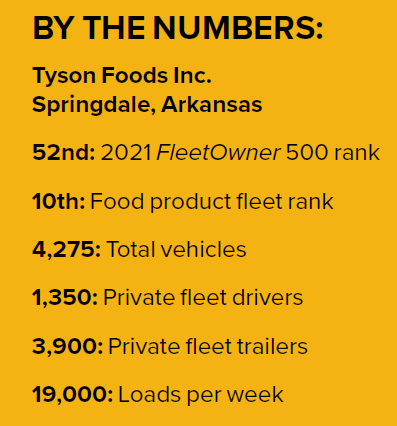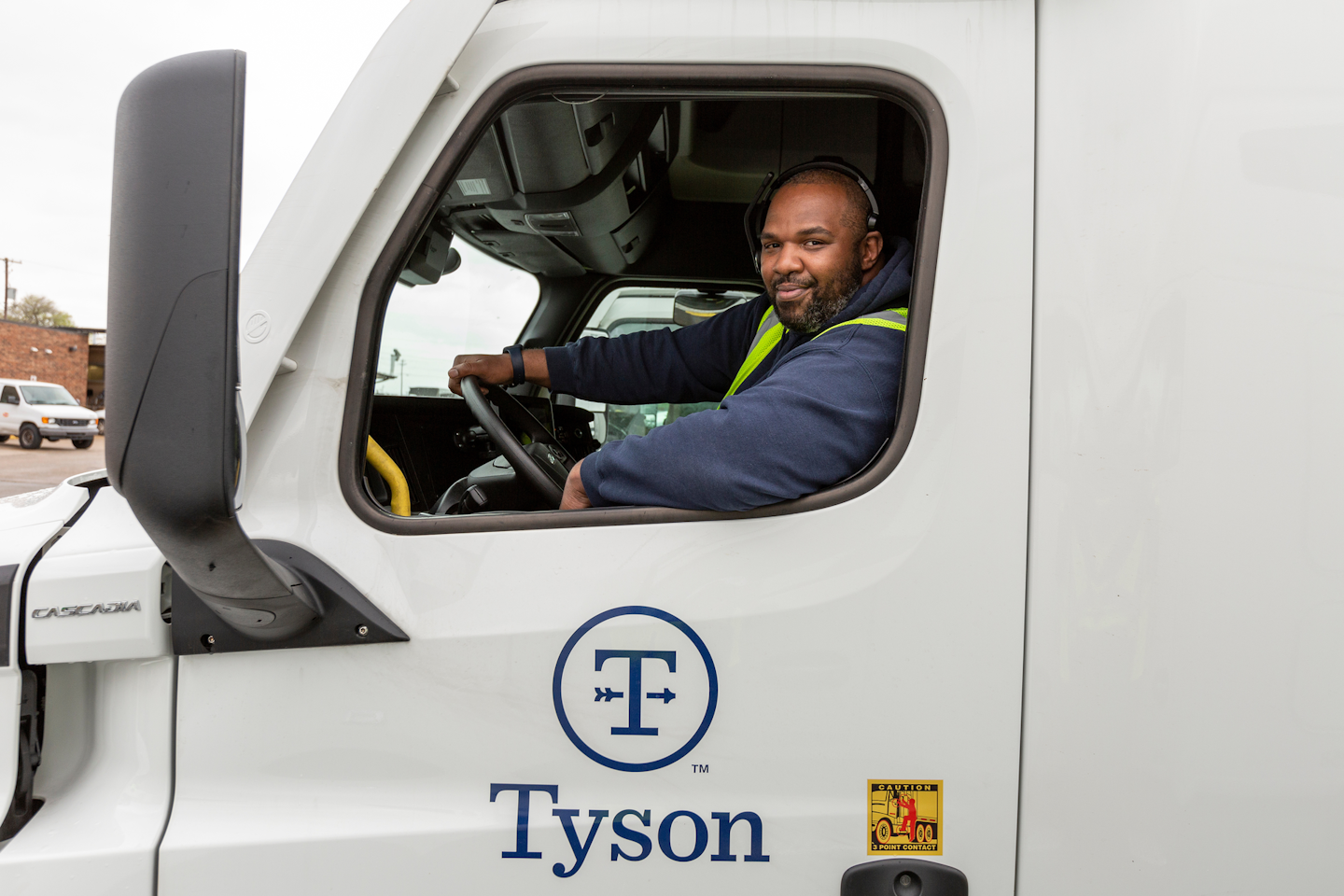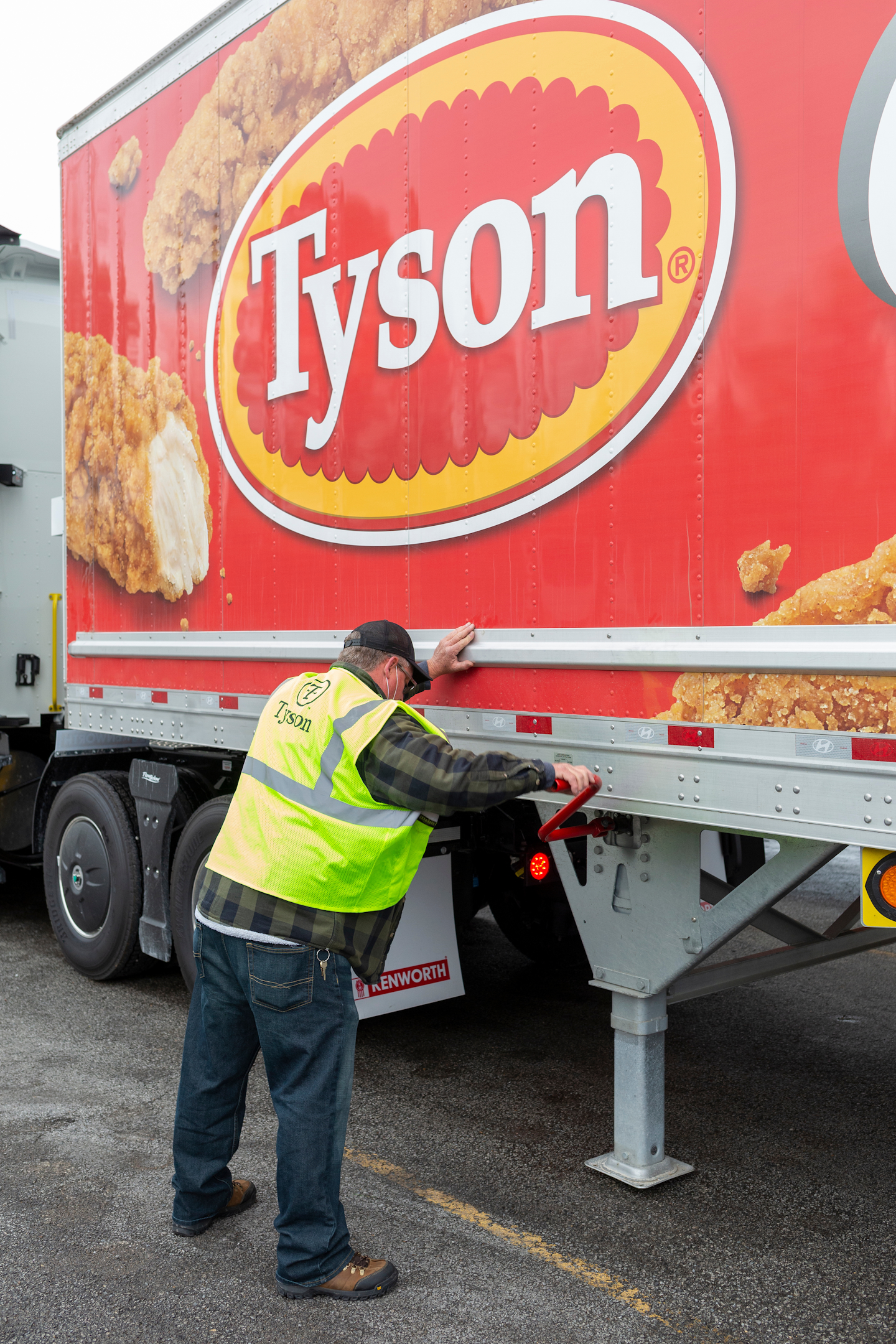One of the world’s largest protein providers took what it learned during the last capacity crunch to keep freight moving through the pandemic.
While its name might be synonymous with chicken, don’t call Tyson Foods a poultry company. The 10th largest private fleet among food haulers in the U.S., Tyson has seen a lot of growth in recent years.
“We’re no longer that medium-sized poultry company. We are one of the largest world providers and producers of protein. We don’t even call ourselves a chicken company anymore,” Phillip Vanhook, Tyson Foods managing director of transportation operations, said. “It’s protein because we have chicken, beef, pork. You see us everywhere: all the Hillshire Brands with your sandwich meat, Jimmy Dean with breakfast foods. We have stuff in restaurants with chips, tortillas, granola bars. We are in every realm of the grocery store and part of nearly every foodservice space. In any restaurant you go into, we’re probably in everything except the lettuce and tomatoes.”

Vanhook, who has been with Springdale, Arkansas-based Tyson for 30 years, spoke with FleetOwner about the growth of the company and its private fleet over the years. The 52nd largest private fleet in the country, Tyson operates 4,275 vehicles, according to the 2021 FleetOwner 500 Top Private Fleets rankings. Tyson’s private fleet has 1,350 active drivers for 1,160 trucks and about 3,900 temperature-controlled trailers, according to Vanhook. Tyson was named one of three finalists for the annual FleetOwner 500 Private Fleet of the Year awards, which were announced during the National Private Truck Council’s 2021 conference in Cincinnati on June 15.
When Vanhook started with Tyson, the company had about 350 trucks. But through mergers, acquisitions, and company growth, he’s watched the fleet balloon. “With that growth, the need for more capacity became more prevalent,” he said. “We would add 100 trucks here and add 100 trucks there—and over the years, you look up and we’re at 1,160 trucks.”
The Tyson fleet moves about 19,000 loads per week, 60% of which are contracted and the other 40% hauled by its private fleet.
One of the most significant transformations for the Tyson fleet happened during the 2017 and 2018 trucking capacity crunch that transformed how the office staff of about 250 people worked together. “We tore down our silos over the years and now our contract carrier platform and our private carrier platform work together, making sure that we’re making the best decisions for Tyson Foods,” Vanhook said. “When we had that capacity crunch, that sort of transformation allowed us to make decisions and do the right thing for Tyson Foods.”
After weathering the capacity crunch last decade, the COVID-19 pandemic created more challenges for the protein company’s fleet—from making sure drivers had personal protective equipment such as masks and sanitizer to ensuring its contracted carriers had loads to haul.

“Suddenly, the driver market shrank as people were paid to stay home and not incentivized to come back,” Vanhook recalled. “We were all working very diligently to fill our trucks and get our trucks back on the road because there is so much freight out there. Not only that, our freight shifted as retail foodservice chains were closing. A lot of that shift went right to the grocery store, so we had to change our freight lines and work with our carriers on that. We try to be very transparent with our carriers and stay in front of them—to allow them to get the best utilization they can—and allow them to make changes on the fly as well.”
That utilization was essential to keep up with the fleets’ high level of service, which includes a 97% to 98% on-time delivery from its private fleet (and 95% to 96% from contracted carriers). “We’re very proud of our service,” Vanhook said. “I’ll tell you from an OTIF [on-time, in-full] standpoint, we are one of the largest suppliers at the highest level, and we’re very proud of that fact.”
Helping drivers succeed
Vanhook said Tyson works to make sure its drivers are never in a bad position. “We need truck drivers and good communication to allow each other to be successful,” he said. “That was our biggest challenge—but also our biggest opportunity—through 2020 and COVID.”

As more states continue to open up and federal unemployment insurance dries up, Vanhook expects to see more drivers rejoin the workforce, which he said will positively impact capacity.
Another way Tyson is attracting drivers is by developing more regional runs. “The old cowboy model of staying out on the road a month is no longer valid; I wouldn’t do it,” Vanhook said. “We do have some drivers that still do it for the Tyson private fleet and hats off to them. They are the backbone of our operation.”
But today, Tyson Foods’ supply chain distribution network is becoming more regional. “It’s our largest growth pattern,” Vanhook said. “We’re also moving our distribution points, which we call the ‘network of the future,’ where we’re moving distribution points closer to the end customer. A lot of our freight has become more regionalized over the last two years, and we’ve gone from about 200 trucks up to about 600 trucks in that space alone.”
Along with creating routes that allow drivers to spend more time at home, in recent years, Tyson has focused on reducing driver injuries. “Over the last six years, we’ve gone from 66 driver injuries—predominantly slips, trips, and falls out of the truck you’re climbing in and out of, or walking around or cranking handles and all the other stuff drivers try to muscle through—to less than 20 driver injuries this fiscal year,” Vanhook said. “We want our drivers to arrive home at night in the same condition they came into work in the morning.”
That safety push continues on the road. As of April 2021, Tyson drivers have been involved in just 2.06 preventable accidents per million miles traveled over the past year. “That’s just an outstanding number, in my opinion, around our accident prevention,” Vanhook said. “We’ve invested a lot in our training and technology.”
Tyson uses telematics to monitor vehicle speeds and following distances, and trucks are governed at 60 mph. “We have a good portion of our drivers who are just very good professionals who go out and want to serve not only the company but themselves,” Vanhook added.
By Josh Fisher
Source: https://www.fleetowner.com/




